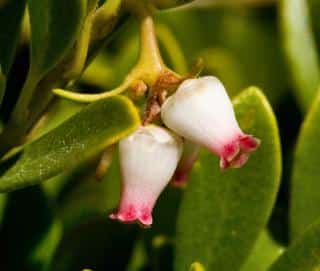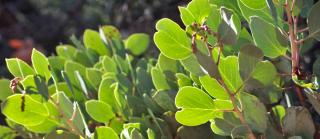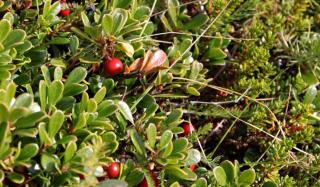

A small shrub with small white and red flowers grouped in clusters, bearberry produces small red fruits and is a plant that heals many ailments as it grows in clearings of coniferous forests or nestled among siliceous rocks in mountain ranges across Europe, Asia and North America.
A rare plant that is however well known in Canada, bearberry grows in the same growing conditions as cornflowers do.
A very beneficial plant, it is important to look around and gather information about its health benefits for the body.
Bearberry comes directly from the word “bear” and “berry” because these fruits are often consumed by these massive mammals.

This smallish shrub is said to descend from plants native to Italy or Spain.
The leaves, especially dried leaves (whole or chopped), are what is found most appealing in cooking.
Scientists have shown that American Indians used to put dried leaves of this plant together with their tobacco and other herbs as they smoked their pipes.
In their own culture, bearberry had the power to “soothe the spirits and clear the mind”: in a land where harmony between tribes and nature counted so much, this was a useful asset!
However, this plant which also goes by the names “red manzanita” and “ravenberry” is bursting with benefits that apply to medicine, the culinary arts and cosmetics.
On the medical side, bear grapes are recommended to treat or prevent chronic or acute urinary tract infections, especially in cases where use of antibiotics isn’t possible.
This plant thus earns its title as natural urinary antiseptic, among others applicable to cases of cystitis.
Being genetically related to cranberry, bearberry treats other types of urinary tract inflammations as well, among which collobacillosis, kidney inflammations, prostatic hyperplasia entailing appearance of pus in urine, renal pelvis and urethra inflammation after having experienced gonorrhea.
On top of that, medicinal properties of bearberry include alleviating hemoptysis and incontinence.
Its antibacterial properties help treat diarrhea and discharges naturally.
Other disorders such as leukorrhea, hematuria, urine retention, enterocolitis, dysentery, menorrhagia and – albeit to a lesser degree – kidney stones, too.

All in all, this natural urinary antiseptic releases its anti-infectious compounds exactly where they’re needed.
Note that in the XVIth century, aside from using it to treat urinary tract ailments, American Indians also used this beneficial plant to heal venereal diseases and obesity.
In cosmetics, it is known that bearberry has a regulating effect on melanin production.
Its properties are thus famous for erasing skin spots and blemishes or skin imperfections that are due to excess melanin.
History remembers that American Indians called this food item “kinnikinnick”. They would eat bearberry both raw and cooked.
Generally, bearberry is eaten in soup and broth, especially when cooking meat.
In most other cases, bearberry leaves were boiled in animal fats and then mixed to fish spawn.
To sweeten it up somewhat, maple or birch syrup would be added.
For treatment, this is the recommended course for bearberry:
– For decoctions – use ⅓ to ½ oz (10 to 15 g) leaves for 1 quart (1 liter) boiling water. Let it boil and simmer for about 30 minutes. Drink when ready.
– In powder form – ingest 2 to 8 g (or for 250 mg capsules about 4 to 6 capsules) between meals for 10 days.
For preventive treatment, consume 1 or 2 doses a day for 10 days, repeat every 2 months.
– As an Infusion – weigh out 0.7 to 1 oz (20 to 30 g) leaves per quart (liter) water. For best results, drink 3 to 4 cups a day.
– Mother tincture – ingest 50 to 90 drops a day, over a short span of time.

For persons who have a sensitive stomach, bearberry might lead to nausea, gastric irritation or vomiting.
Ingesting “Bear grapes” is strongly discouraged for pregnant women and those who are breast feeding their child.
In case of doubt, especially if symptoms persist, treating with plants isn’t enough. It is always recommended to follow through with a medical consultation.
Bearberry, a resilient shrub with red and white blossoms, thrives in coniferous clearings and rocky mountain terrain. Well-known in Canada, it shares a habitat with cornflowers. Renowned for its health benefits, bearberry, found across Europe, Asia, and North America, offers therapeutic value, making it a valuable resource for holistic well-being. 🌿